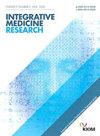Cochrane关于针灸的综述是过时的,没有考虑到假对照的具体效果,可能低估了针灸治疗的疗效
IF 3
4区 医学
Q2 INTEGRATIVE & COMPLEMENTARY MEDICINE
引用次数: 0
摘要
由于Cochrane综述代表了系统评价的质量标准,我们试图澄清针灸的Cochrane综述在多大程度上表征了假针灸的潜在和有问题的特定效果。方法我们将Cochrane针灸综述的记录导入到covid - ence中,并独立选择至少一项纳入比较手工针灸和假针灸的研究。对符合条件的综述的双重数据提取包括综述作者的专业知识、干预充分性的评估、STRICTA指南的使用、假手术方法的特征,以及是否讨论了假手术的具体效果与针穿、点的选择或假手术装置的使用有关。结果56篇以针灸为标题的综述中,16篇不合格。在纳入的40篇评论中,有28篇发表于2018年或之前。大多数评论都有一位具有针灸试验专业知识的作者;然而,很少进行干预充分性评估,很少使用STRICTA指南,并且假针灸方法的报告通常缺失或缺乏严谨性。虽然20/40的评论承认,假药作为一种积极的、因此不充分的控制存在争议,但没有评论将这一点纳入他们的结论。结论:大多数关于针灸治疗的Cochrane综述都是过时的,并且与针灸生物机制科学和“活动”假臂的影响也不相关。假对照的处理,加上缺乏对verum干预充分性的评估,违反了明确的研究标准,表明针灸的疗效在Cochrane综述中可能被低估了。本文章由计算机程序翻译,如有差异,请以英文原文为准。
Cochrane reviews of acupuncture are dated, do not account for the specific effects of sham controls and likely underestimate the efficacy of acupuncture therapy
Background
Because Cochrane reviews represent a quality standard for systematic reviews, we sought to clarify to what extent Cochrane reviews of acupuncture characterize the potential and problematic specific effects of sham acupuncture.
Methods
We imported records of Cochrane acupuncture reviews into Covidence and independently selected reviews with at least one included study comparing manual acupuncture to sham acupuncture. Dual data extraction for eligible reviews included review author expertise, evaluation of intervention adequacy, use of STRICTA guidelines, characterization of sham methods, and whether specific effects of sham were discussed relative to needle penetration, point selection or use of a sham device.
Results
Of the 56 reviews with acupuncture in the title, 16 were ineligible. Of the 40 included reviews, 28 were published in or before 2018. Most reviews had an author with acupuncture trial expertise; however, assessment of intervention adequacy was rarely conducted, STRICTA guidelines were rarely utilized, and reporting of sham acupuncture methods was commonly either missing or lacking rigor. While 20/40 reviews acknowledged the controversy regarding sham as an active and therefore inadequate control, no reviews incorporated this into their conclusions.
Conclusion
Most Cochrane reviews of acupuncture therapy are dated and are also not current relative to the science of acupuncture biomechanism and the impact of ‘active’ sham arms. The handling of sham controls, combined with a lack of evaluation of verum intervention adequacy, contravenes a clear research standard and indicates that the efficacy of acupuncture is likely underestimated in Cochrane reviews.
求助全文
通过发布文献求助,成功后即可免费获取论文全文。
去求助
来源期刊

Integrative Medicine Research
Medicine-Complementary and Alternative Medicine
CiteScore
6.50
自引率
2.90%
发文量
65
审稿时长
12 weeks
期刊介绍:
Integrative Medicine Research (IMR) is a quarterly, peer-reviewed journal focused on scientific research for integrative medicine including traditional medicine (emphasis on acupuncture and herbal medicine), complementary and alternative medicine, and systems medicine. The journal includes papers on basic research, clinical research, methodology, theory, computational analysis and modelling, topical reviews, medical history, education and policy based on physiology, pathology, diagnosis and the systems approach in the field of integrative medicine.
 求助内容:
求助内容: 应助结果提醒方式:
应助结果提醒方式:


